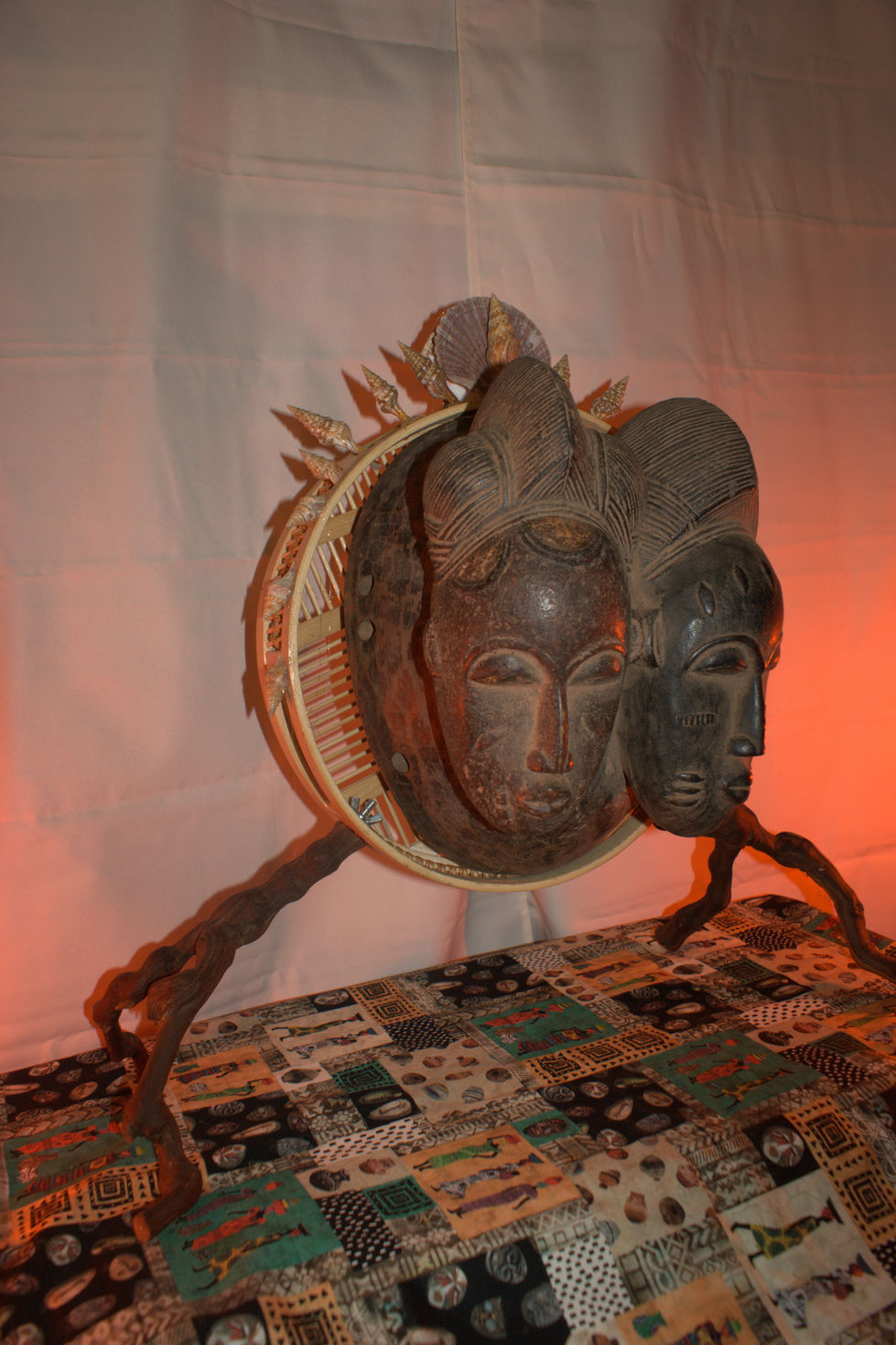W🌍RLD HISTORY
Create Your First Project
Start adding your projects to your portfolio. Click on "Manage Projects" to get started
Masque-double Nda Baoulé
Project type
Mask
Name
Masque-double Nda Baoulé (Baoulé Double Mask)
History
This double mask originates from the Baoulé people of Côte d'Ivoire (Ivory Coast). The Baoulé are well-known for their rich artistic traditions, especially their elegant and refined masks and figural sculptures.
Nda masks are a specific type of Baoulé mask often associated with entertainment masquerades or more serious spiritual performances. Double masks, or Janus masks (referring to the Roman god Janus with two faces), are a distinctive form found in various African cultures, including the Baoulé. They represent dualities or emphasize comprehensive vision. While the specific creation date isn't provided for this piece, Baoulé masks generally span from the late 19th to mid-20th century, representing a peak of artistic output. The context suggests it is an authentic cultural artifact used in traditional Baoulé ceremonies.
Cultural Significance
Double masks, like this Nda type, hold significant cultural meaning for the Baoulé:
Duality and Complementarity: The two faces symbolize dualities and complementary forces, such as male and female, good and evil, past and present, or the visible and invisible worlds. This reflects the Baoulé worldview which often emphasizes balance and interconnectedness.
Comprehensive Vision: A double face can suggest the ability to see in multiple directions or possess all-encompassing knowledge and power, indicating the mask's effectiveness and the wisdom of the spirit it embodies.
Honoring Twins or Specific Spirits: In some contexts, double masks might honor twins, who are often considered sacred and powerful in many African cultures, including the Baoulé. They can also represent specific nature spirits (asye usu) or idealized ancestors.
Performance and Education: Like other Baoulé masks, the Nda mask would be brought to life through performance, combining dance, music, and storytelling. These performances serve to entertain the community, reinforce social norms, and transmit cultural knowledge to younger generations.
Ritual Use: Beyond entertainment, such masks might be used in more solemn rituals to address specific community issues, ensure fertility, or promote general well-being.
Symbolism and Design
The design of this Baoulé double mask is highly aesthetic and symbolic:
Two Faces: The most striking feature is the presence of two distinct, yet harmoniously carved, faces. One face appears to have a lighter, perhaps reddish-brown patina, while the other is a darker, almost black tone. This difference in color could symbolize different aspects of the duality (e.g., life/death, male/female, day/night).
Shared/Conjoined Coiffure: The two faces are united by a shared, elaborate coiffure or headdress at the top. This signifies their interconnectedness and that they are part of a unified spiritual entity. The intricate carving of the hair is characteristic of Baoulé artistry, representing beauty and high status.
Circular Frame: The faces are set within a prominent circular frame, which may symbolize wholeness, cycles, or the cosmological expanse. The outer edge of this frame appears to have decorative elements or perhaps cowrie shells.
Stylized Facial Features: Both faces exhibit the classic Baoulé style:
High, Arched Foreheads and Eyebrows: Suggesting intellect, wisdom, and dignity.
"Coffee-bean" Eyes (often closed or downcast): Conveying serenity, introspection, or a focus on the spiritual realm rather than the mundane.
Delicate Noses and Mouths: Contributing to the overall sense of refinement and composure.
Scarification Marks: Subtle lines or patterns on the faces, especially on the forehead or around the eyes, represent scarification marks, which are significant cultural markers of beauty, ethnic identity, and social status among the Baoulé.
Branch-like Support: The organic, branch-like supports on which the mask rests are unusual for a standalone mask and suggest it might have been part of a larger ensemble or display, perhaps emphasizing its connection to nature spirits or ancestral trees.
Patina: The varied patinas on the two faces (one lighter, one darker) further enhance their individuality while highlighting their complementary nature.





